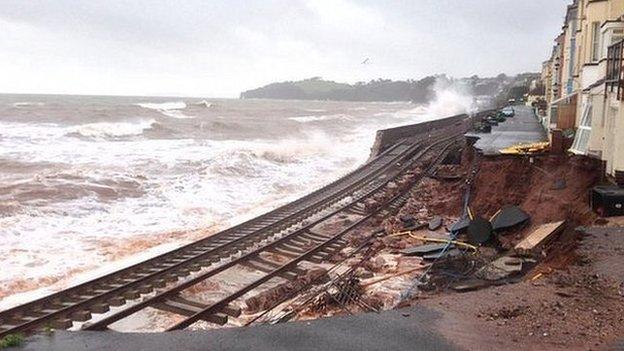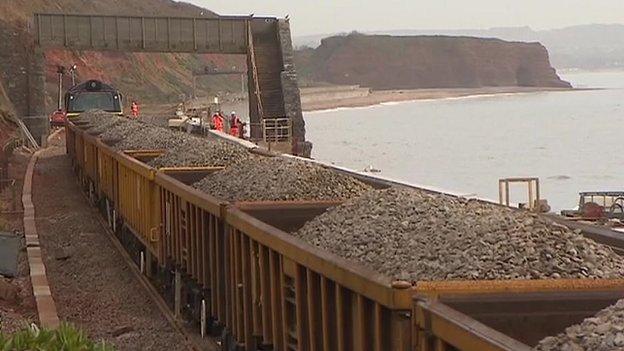Dawlish landslip: Army to help clear rail line
- Published
About 30,000 tonnes of unstable rock and soil has to be removed
The Army has been called in to help reinstate the main rail line to the south west of England after it was destroyed by storms.
Up to 30,000 tonnes of unstable rock and soil has to be removed near Dawlish in a controlled landslip.
Network Rail hopes the Royal Engineers will be able to use specialist equipment to remove part of the rock face so the line can be reinstated.
It added it hoped the line would still be reopened on 4 April.
Network Rail said it was unable to work below the area close to Teignmouth Road, Dawlish, because of the risk of rock and soil collapsing.
Rail bosses are considering blasting the rock face and even using a specialist tug based at Falmouth, Cornwall, to fire water at the cliff.

The rail track at Dawlish was left hanging in mid air after massive waves destroyed the sea wall in February
Julian Burnell, of Network Rail, said they were also consulting experts at the Camborne School of Mines.
He said: "The Army have been offering us advice since the start of the problem and they have a very small team of one or two officers in place helping us.
"We are hoping they will be able to use specialised equipment protected by armour, to remove the rock face and soil.
"Another option we are looking at is dropping water from a helicopter to help control the landslip."
In February, storms washed away the sea wall and left the track, which connects the South West to the rest of the UK, suspended in mid air.
Fire crews are continuing to pump sea water on to the cliff to help bring down the rock and soil.
Gaps in the sea wall have since been filled and work to repair the damaged station and platforms at Dawlish have almost been completed.
The first train to use the line, which has been closed since February, managed to travel from Exeter to as far as Dawlish Warren to deliver ballast to the affected area.

The first train to use the line, which has been closed since February, has delivered ballast to the affected area
- Published15 March 2014
- Published4 March 2014
- Published2 March 2014
- Published26 February 2014